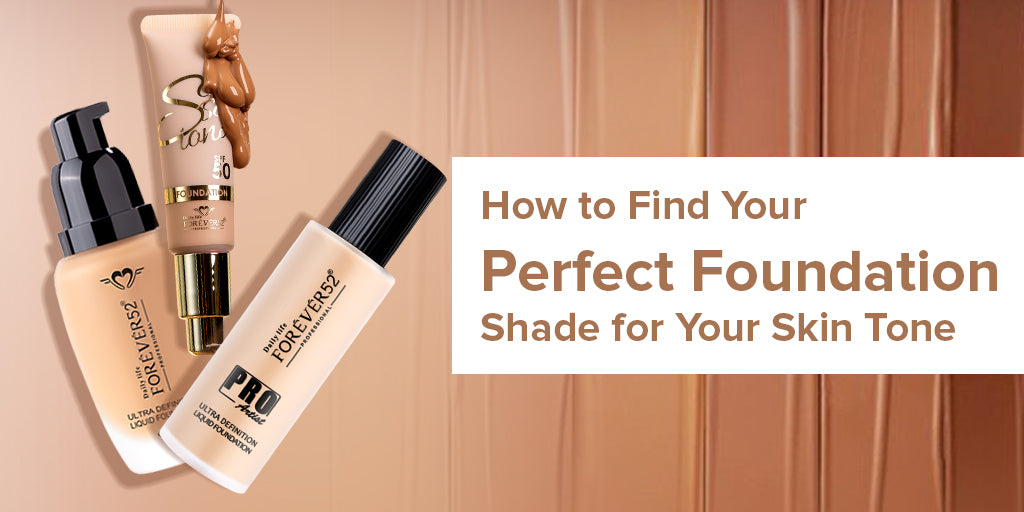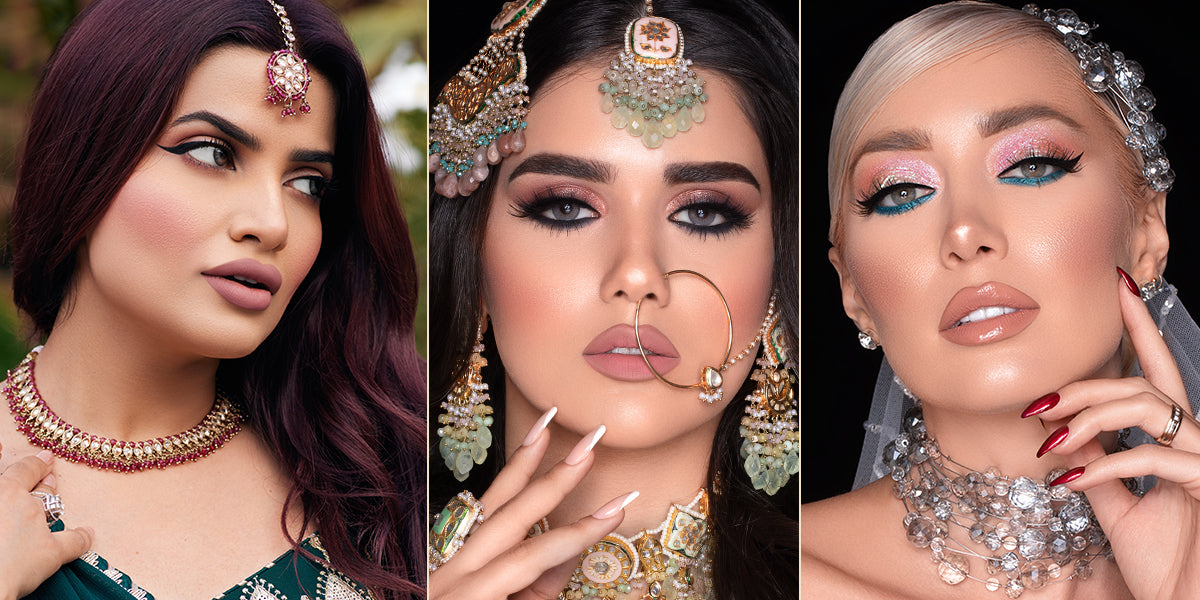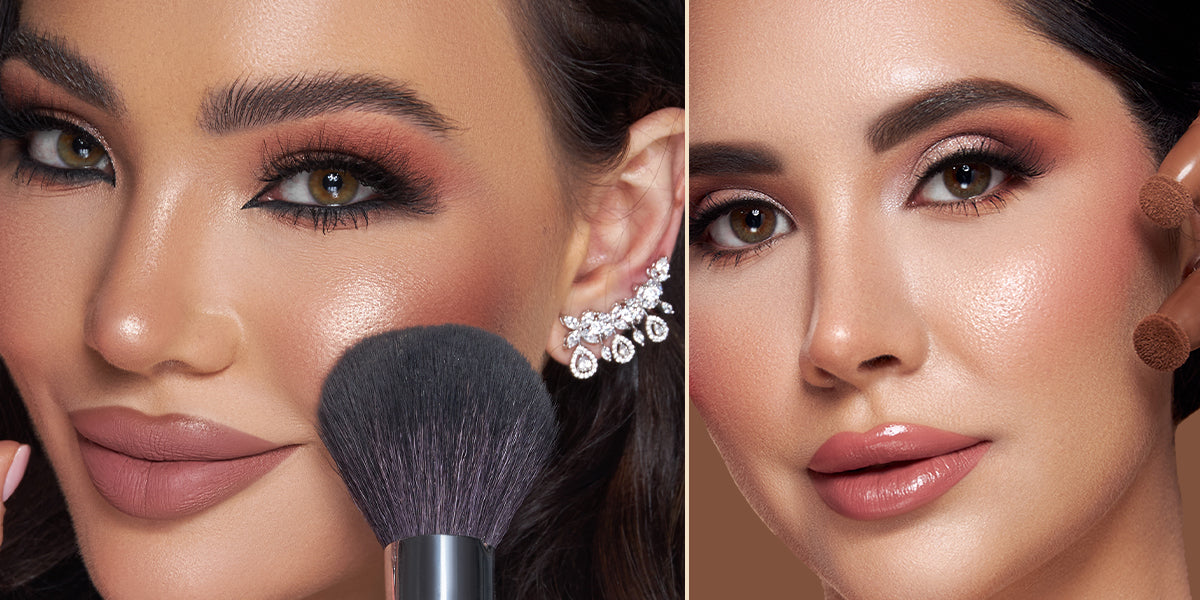Finding the right foundation shade for skin tone feels like searching for that one needle in a haystack. You may have experienced the frustration of a mismatched foundation, either too light, too dark, or a shade that turns orange after a few hours. The wrong shade can affect not just your makeup but your overall confidence. But don't worry; the perfect foundation is out there waiting for you! So, do you want to know how to choose the foundation shade that is right for you, blends seamlessly into your skin, improves your natural beauty, and offers you that flawless finish?
Let’s explore how to choose the perfect foundation shade for your skin tone to create a flawless base for every makeup look.
Understanding Your Skin Tone and Undertone
Defining Skin Tone
Your skin tone is nothing but the surface color of your skin. It typically falls into one of three categories: light, medium, or dark. Knowing your skin tone is the primary step in narrowing down foundation options. Light skin tones usually have fair or porcelain hues, medium tones may appear olive or golden, and darker tones can range from caramel to deep brown.
Identifying Your Skin Tone

Examine your skin in natural light. Does it appear pale, golden, or deep? This can help you pinpoint your tone and start the journey to finding the right match.
Defining Undertone
Your undertone is the subtle hue beneath your skin’s surface and can be cool, warm, or neutral.
Cool undertones: Skin leans pink, red, or blue. This is often visible in lighter skin tones but can occur in any shade.
Warm undertones: Skin leans yellow, golden, or peachy. This undertone adds warmth and radiance to your complexion.
Neutral undertones: A combination of cool and warm undertones that balance each other out, offering the most versatility in the foundation shade.
Determining Your Undertone
- Vein Test
Look at the veins on your wrist. Blue veins suggest cool undertones, green veins indicate warm undertones, and a mix may mean neutral.
- Jewelry Test
Know which jewelry looks better on you, whether gold or silver. Silver complements cool undertones, while gold flatters warm undertones. Neutral undertones can pull off both with ease.
- Sun Reaction Test
If you burn easily, you likely have cool undertones. If you get tan easily, you likely have warm undertones. A mix of both reactions may indicate neutral undertones.
Understanding your undertone is important because it influences how a foundation shade interacts with your natural complexion.
The Importance of Lighting in Testing Foundation Shades
Natural Light vs. Artificial Light

Lighting is important in how a foundation appears on your skin. Artificial lighting, such as fluorescent or yellow light, can distort how a shade looks. Natural light, on the other hand, provides the most accurate representation of your skin tone.
Tips for Testing in Natural Light
- Always test the foundation near a window or outdoors. Natural light ensures the most accurate match because it mimics the lighting in most daytime environments.
- Avoid testing in department store lighting, as it often casts a yellowish hue. This can make shades appear warmer than they actually are, leading to a potential mismatch.
- Additionally, check how the foundation looks in various settings, such as in dim light or under bright indoor lighting, to ensure versatility.
Methods to Test Foundation Shades
Swatching on the Jawline
Instead of swatching on your hand, apply foundation along your jawline. This area provides the most accurate indication of how well the shade blends with your face and neck. Many people overlook this step and end up with a shade that matches their hands but not their faces.
Blending and Observing
Blend the foundation into your skin and wait a few minutes. Some formulas oxidize, changing color after application. Oxidation can make a foundation look darker or warmer, so patience is key when testing.
Utilizing Samples
Ask for samples at beauty counters. Test them at home under various lighting conditions before committing. Trying a foundation for a full day can reveal how it wears over time and how it interacts with your skin type.
Considering Skin Type and Foundation Formulas
Identifying Your Skin Type
Knowing whether your skin is oily, dry, combination, or sensitive can guide you toward the right foundation formula. The wrong formula can emphasize imperfections or feel uncomfortable on your skin.
Matching Formulas to Skin Types
For oily skin: Opt for matte foundation or full-coverage formulas that control shine, such as a waterproof foundation. Look for oil-free and non-comedogenic options to prevent clogging pores.
For dry skin: Choose a cream-based foundation or a hydrating liquid foundation for a dewy finish. These formulas often include moisturizing ingredients like hyaluronic acid or glycerin.
For combination skin: Look for lightweight, buildable formulas that balance hydration and oil control. Avoid formulas that are overly matte or excessively dewy.
For sensitive skin: Stick to hypoallergenic and fragrance-free options. Mineral-based foundations are often a good choice for sensitive skin types
The formula you choose should improve your skin’s natural texture without highlighting any problem areas.
Seasonal Changes and Foundation Adjustments
Impact of Seasons on Skin Tone
Your skin tone can change along with the seasons. Summer’s sun exposure may make your skin darker, while winter may leave it paler. Even factors like indoor heating during colder months can affect your skin’s texture and tone.
Adjusting Foundation Shades Accordingly
Consider keeping multiple shades in your makeup kit or mixing foundations to create a custom shade. For instance, a lighter shade for winter and a darker shade for summer can help you maintain a consistent look year-round. Blend these shades to achieve a seamless transition during in-between seasons.
Utilizing Technology and Tools
Online Shade Finders
Many beauty brands offer digital tools to help match foundation shades. Upload a photo or answer a quiz to find your best match. These tools use advanced algorithms to examine your skin tone and recommend suitable shades.
Virtual Try-Ons
Platforms like augmented reality apps allow you to test shades virtually, offering convenience and accuracy. These tools are particularly helpful for online shopping, reducing the guesswork involved in selecting a shade.
Seeking Professional Assistance
Consulting Beauty Advisors
Visit a makeup counter and ask for help from trained beauty advisors. They can recommend shades and formulas customized to your needs. Their expertise often includes understanding complexions across various skin tones and undertones.
Makeup Artist Insights
Professional makeup artists can offer invaluable advice, especially for special events where you need your foundation to look flawless. They can also teach you application techniques to make the most of your foundation.
Common Mistakes to Avoid
Choosing Based on Bottle Appearance
The shade in the bottle may look different on your skin. Always swatch and test.
Ignoring Oxidation
Some foundations darken after application. Test and wait a few minutes before deciding.
Testing on the Wrong Body Part
The skin on your hand or wrist may not match your face. Always test on your jawline or cheek.
Skipping Moisturizer or Primer
Prepping your skin ensures that the foundation applies smoothly and lasts longer.
Building a Foundation Wardrobe
Benefits of Multiple Shades
Having a range of foundation shades allows you to adapt to changes in your skin tone or create a customized match. This is particularly useful for makeup artists or individuals who frequently experiment with different looks.
Mixing Shades
Blend two shades to achieve the perfect hue for your unique skin tone. Experimenting with proportions can help you discover the ideal balance for your complexion.
To Sum Up
Finally, we have taken the burden off your shoulders about how to choose foundation shade. By following the above-given factors, you can discover a foundation that feels like it was made just for you. Remember, your foundation should improve your natural beauty, not mask it.
For high-quality foundations customized to every skin type and tone, explore Daily Life Forever52’s collection of foundations. From lightweight liquid formulas to full-coverage cream-based options, our range has something to offer for everyone.
Achieve a flawless, radiant look with a foundation that’s as unique as you are. Explore our Forever52 Foundations today!







